The World’s Most Expensive and Unusual Flowers
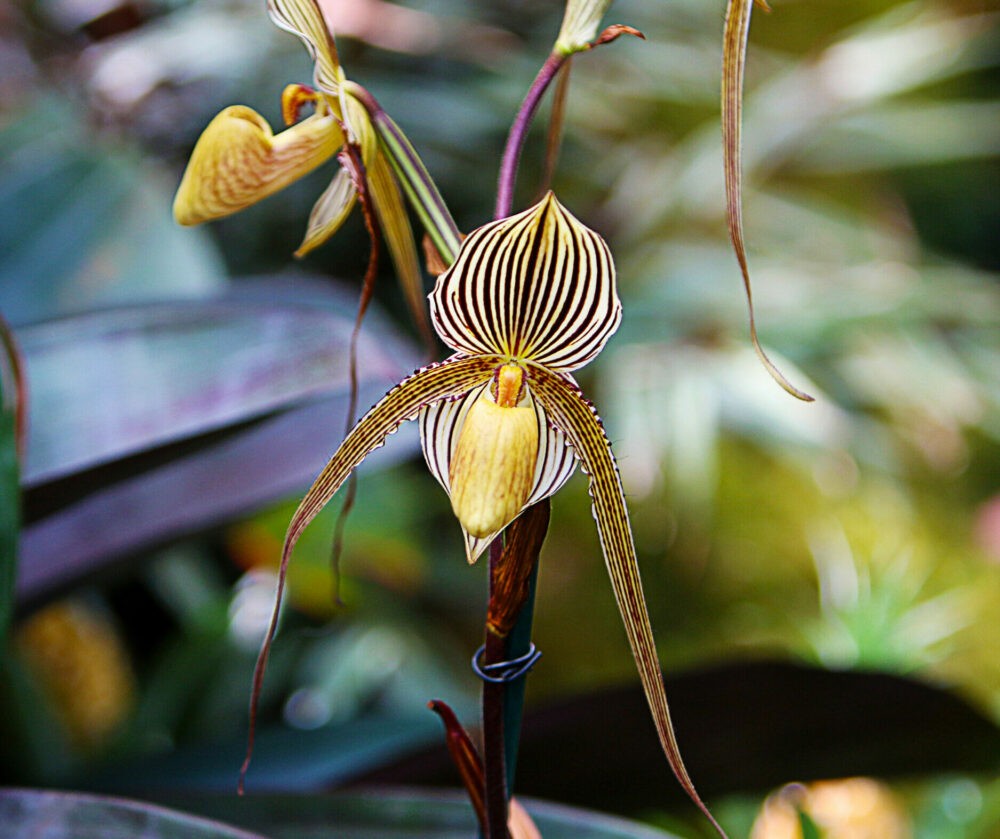
It is easy to understand why the Gold of Kinabalu orchid, above, is considered the world’s most expensive flower, at $6,000 a stem. Also called the Rothschild slipper orchid, it is not only exquisitely beautiful, but flowers extravagantly, with up to six flowers a stem and has a lovely scent. Found near rivers and cliffs, 1,200 to 2,000 feet above sea level in rain forests in Borneo, it blooms in April and May. Good luck in finding one for the prom.
But you can apparently buy an offspring: The Orchid Fix, a breeder of rare orchids in Hawaii, will sell Paphiopedilum (Chiu Hua Dancer x rothschildianum) called Spanish Dancer for $100. Paphiopedilums are slipper orchids, and clearly Spanish Dancer is a beauty. But it is no Rothschild slipper orchid. Also, it is not $6,000.
Here is the fast list of hyper-expensive flowers: A specially bred orchid in Japan that sold to the highest bidder in 2005 for $202,000; the orchid just mentioned; other specialty orchids, like $40 to $200 orchids in pots. After that the usual internet list dwindles down to regular florist bouquets, or things people make up or dig up, like crocuses, because their saffron is valuable, or the Juliet rose, which took David Austin rose growers 15 years to develop. So what was that worth, and do you count the coffee they drank while hybridizing the rose? Estimates on the Juliet rose run from $3 million to $15 million. But that might be because some interns can’t handle currency conversions.
Then there is rare. Rare is another word for valuable, if not expensive. Rare blooms might not be so pretty, nor good-smelling. It might not even be legal to own them. Some are near extinction. Some require a large amount of space in a specialty greenhouse. But here we go, a check list of the most rare and expensive flowers on the planet.
Let’s start with a few you might want to order for a sweetheart, or a funeral: Calla lilies, rubrum lilies, lilies of the valley, orchids of several stripes and what seems to be a flower-of-the-moment, a handful of lisianthus.
First, Consider the Lilies
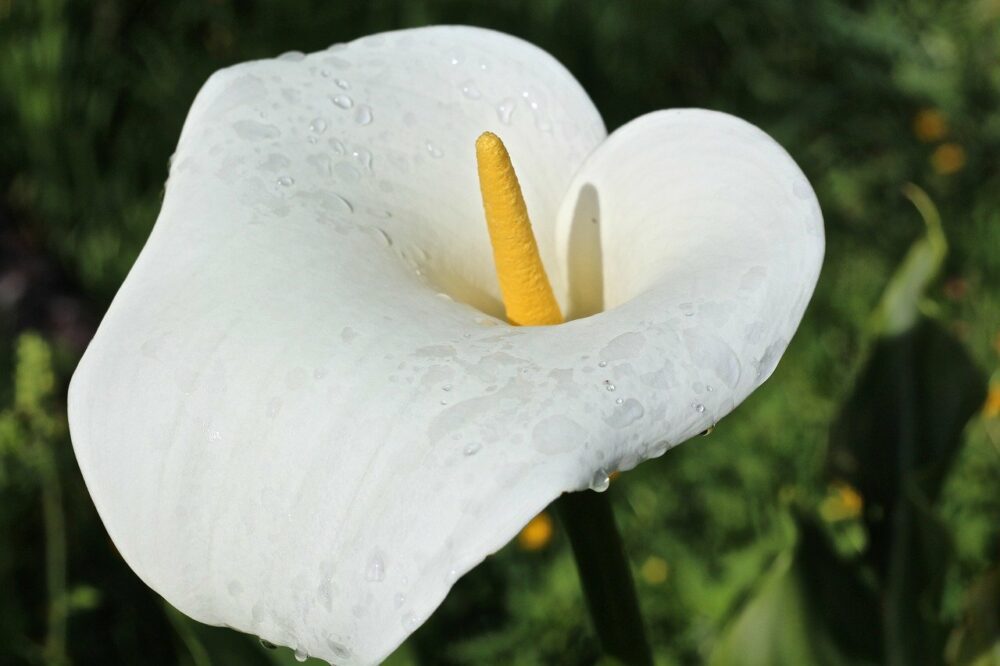
Calla lilies (the tall cousins of arum lilies) are about $5 a stem. The calla lily has the tall yellow spadix extending beyond the trumpet-shaped bract, which can be white, black/dark purple or other colors. Calla lilies look elegant because they have a stem up to two feet long, meaning they can swoon, as well as stand tall in a vase. In the 1930s, brides cradled calla lilies in their arms like a baby. Florists these days like to cantilever them in a low vase wrapped with banana leaves.
Lilies of the valley run a lot steeper, partly because they are so tiny that it takes a lot of them to make an impact, and mostly because they have such a short bloom period.
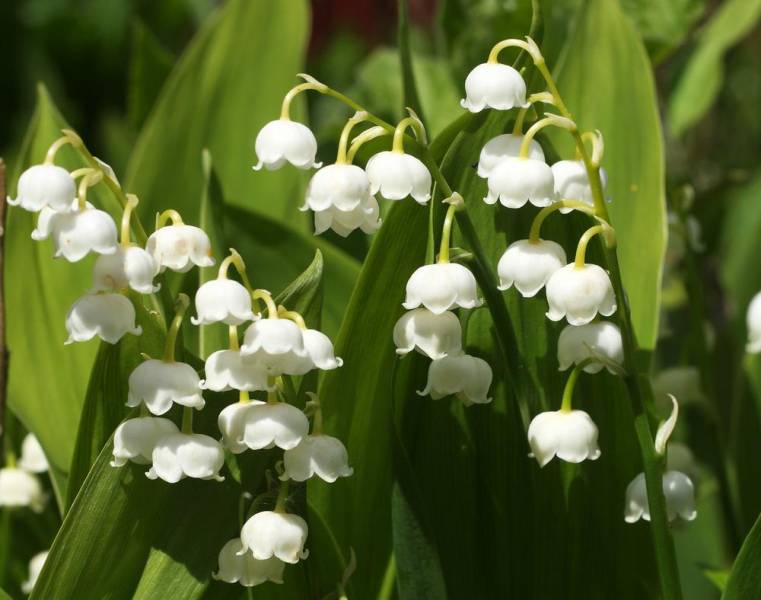
Lily of the Valley (Convallaria majalis) blooms in March-April (let’s note here that’s it’s poisonous, ok?) and has a haunting, sweet scent.
For a generous little bouquet expect to spend $50.
Now, for the opposite scale, the rubrum lily, the gloriosa lily, said to be Perry Ellis’s favorite flower. This is the national flower of Zimbabwe and a more flamboyant flower is hard to find on earth. (OK, bird of paradise, but for anyone who has lived in Florida, those things grow like weeds.) And here go the Rothschilds again. The scientific name is Gloriosa rothschildiana. Were they the only family tromping around the jungles looking for … what? … and bringing back flowers?
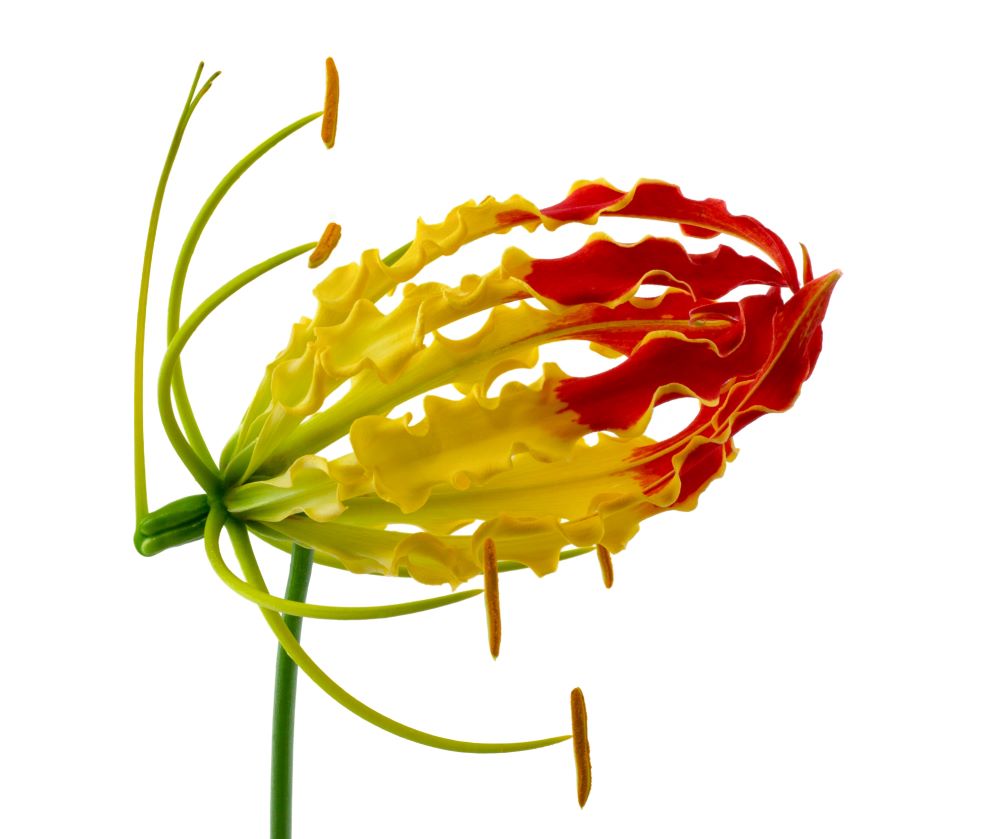
The gloriosa looks like a 50s bleached-blonde Italian film star, with a bright scarf, riding a Vespa. It is part of the Colchicaceae family, and we’re betting you can’t say that three times after drinking three limoncellos sitting in the sun on the Amalfi Coast.
A single Gloriosa stem is $6 to $10. Imagine an entire bouquet! They also come in this climbing form.
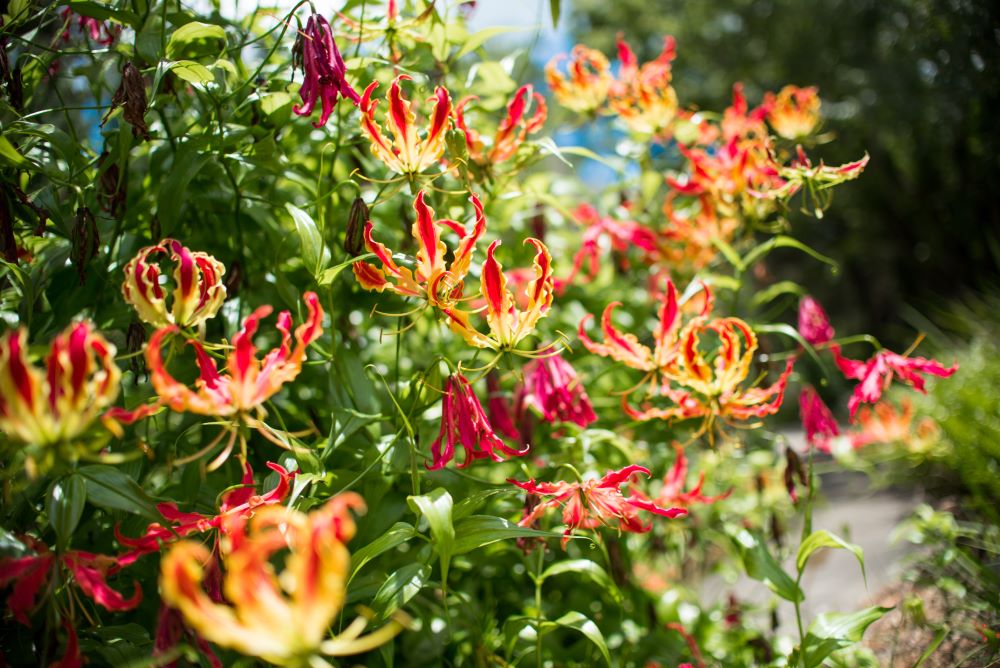
Let’s talk about those expensive orchids before we get to lisianthus.
Orchids Make Some People Nuts
Orchids have always meant beauty, luxury, a special occasion: mother’s day, the prom, a wedding. There are people who can take or leave orchids, which is to say most people. A nice phalaenopsis on the coffee table for a few months, fine.
Some sources say that orchids have now surpassed poinsettias as the most common house plant, reaching a $10 billion a year business. Look at supermarket aisles, year ’round. Pots of orchids are even sold at farmers’ markets. $9.99 to $15. But those are the cloned dendrobiums that look like every other cloned dendrobium. Nothing wrong with them.
Orchid lovers, on the other hand, are way beyond supermarket plants. They haunt orchid shows. (Sarasota, Florida, January 4-5; San Diego monthly judging January 7; Fort Lauderdale Orchid Society Show, January 10-12 – you get the idea.) They paw through orchid catalogs. They thrill to breeding their own orchid crosses, a process that is obscenely intimate. The Greeks believed that eating orchid tubers improved virility. Orchid breeders practically make love with their orchids.
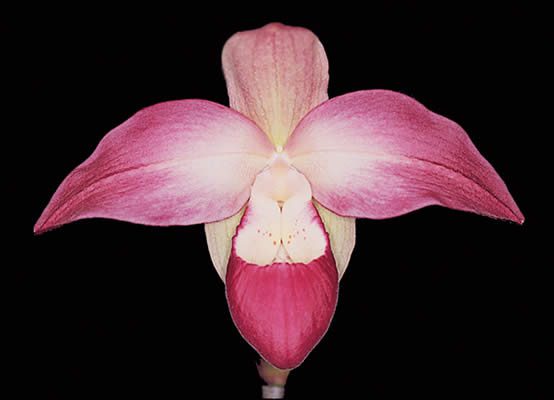
And then there are the upper reaches of orchid-dom. Take the Phragmipedium Suzanne Decker orchid, above, from Piping Rock Orchids. To you and me, it’s pretty. To orchid lovers it is a Phragmipedium – kovachii hybrid, $99.95, Phragmipediums being a rare species of orchid from Peru. And if Piping Rock’s picnic in New Hampshire on June 8 with a focus on “grow species of Japanese orchids, including Neofinetia falcata, Sedirea japonica, Dendrobium moniliforme and Japanese Cymbidium goeringii” sounds fascinating, well, you missed it. But keep an eye on their web site for this year’s subject.
But that is not the height of orchid mania. There is the quest for the black orchid, of course. And the Gold of Kinabalu, below, already mentioned. And then there is one orchid, only one, that was sold for $202,000.
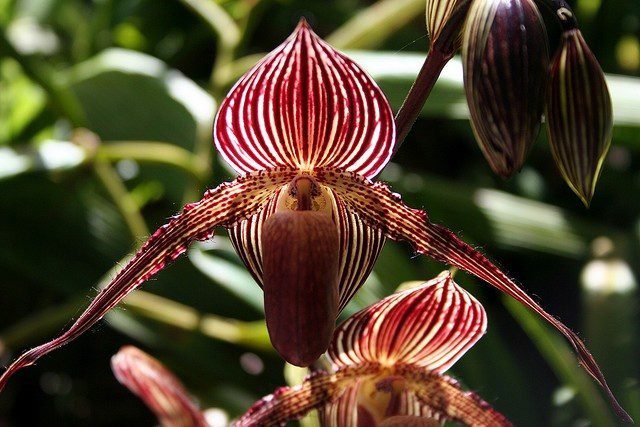
Yes, it sounds like tulip mania, the craze for certain tulip bulbs in 1636-37 that dented the Dutch economy. But this was an orchid plant created at Shenzhen University, and then auctioned off to the highest bidder.
Yes, yes, yes. I had the same questions. This isn’t the most beautiful orchid ever, why so expensive? And weren’t there little baby orchid plants, too, that other people got? Apparently some people have seeds for the Shenzhen orchid and sell them. Perhaps they will be the new Bitcoin.

All I know is that it took eight years of careful orchid breeding to create this orchid, which sold for the above-mentioned $202,000 to an unnamed buyer (would you want your wife to find out you spent that much on a orchid?) in 2005. Moreover the orchid blooms only once every four or five years. So, since this orchid was purchased, the buyer has been able to enjoy it, at most, three times.
True, the orchid bears many flowers. (It had better!) And about the only thing I’ve been able to find out about what makes it so special is that “it has a lovely taste.” (!?!)
Lisianthus, the new trendy flower
You would guess that wildly out-of-season peonies would end up on this list, but peonies late into the summer (thanks to shipments from far north in Canada) and more peonies in December (fast boats from Australia) seem to keep the peonies flowing through every month of the year. They may not have the scent of a fresh-picked peony from the garden, but they won’t be $15 a stem, either. Ditto, the David Austin Juliet Rose. A bouquet of blush Juliet roses can be had (the standard dozen) for $55 in New York, and probably elsewhere. They are considered garden roses. They do not have the gorgeous scent of other garden roses. But their upside-down Southern belle in hoop skirt look is just so darned charming, they would make anyone melt with pleasure.
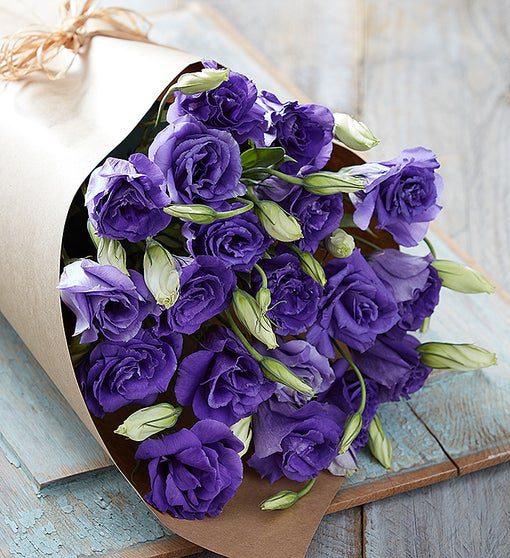
Now here comes a flower that has no scent, that didn’t cost $3 million to create and that is darned hard to start from seed: lisianthus. I discovered some plugs at Agway in Upstate New York in flats about 20 years ago, and had great luck growing them. Their purple twisted umbrellas open up charmingly, and as long as you keep cutting flowers, they will keep on producing. They come in single and double, look pretty in bud and full flower. Usually just purple or pink, they now come in white and sometimes bi-color options.
They look a little like a reflexed rose, or sometimes a tulip, or a carnation, or a ranunculus. Florists have gone nuts for them lately. The petals are tissue soft, and the stems are kind of flimsy, which may lead to the stiff prices. But 1-800-flowers offers 10 stems (and more flowers) of purple lisianthus wrapped in brown craft paper for $50, which is of course $5 a stem, plus delivery. Purple may be a little too instense, but there might be other options.
And Now Less Likely Candidates for Your Home
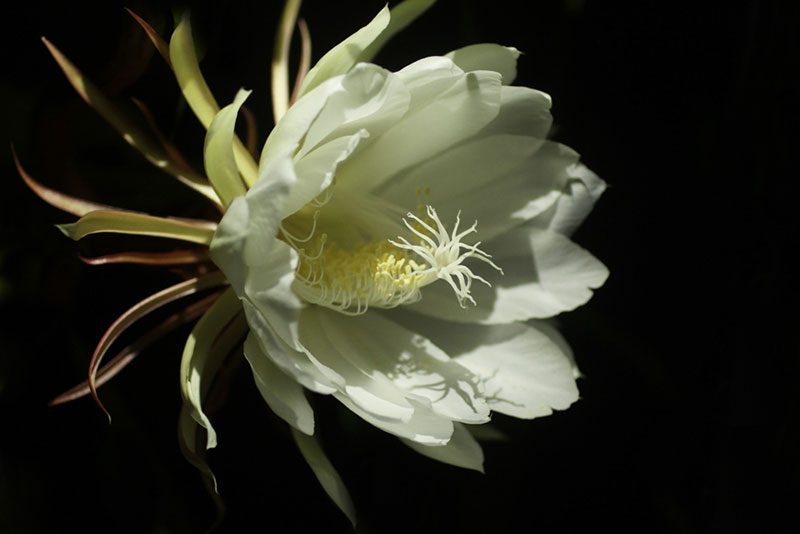
Here is a beauty that will never make it to the prom or your dining table centerpiece. It’s called Queen of the Night, technically, the flower of the Epiphyllum oxypetalum cactus, which blooms rarely and only at night. Plus, its flowers wilt before dawn.
But, the Queen of the Night has its fanciers. Also known as the Night Blooming Cereus, the flower has a spell that cannot be bought. It is the same flower that causes such great excitement in “Crazy Rich Asians,” when the Tan Hua flower, blooms. Same flower.
The Tohono Chul Botanical Garden in the Sonoran Desert, in Tucson, Arizona, keeps loyal fans alerted to their 300 budding cereus cactus, which tend to bloom en masse. On the night when the most blooms are expected, the garden stays open late and serves ice cream, beer and wine. The scent (required to attract all the pollinators that have just a few hours to do their jobs) is supposed to be transporting.
The Corpse Flower Blooms, for Better or Worse
Jill Brooke has written elsewhere about the world’s largest Corpse Flower, a flat orange raffelesia behemoth measuring 3.6 feet across that would have given the plant in “The Little Shop of Horrors” a run for its money. That one, which bloomed in early January 2020, looked like a giant pimple.
Most plants that earn the title Corpse Flower are from another line, the arums (or true lilies). The one below bloomed at the New York Botanical Garden in 2018, and drew crowds of people, most of them with children, ready to walk up and smell a flower with a scent like rotten meat.
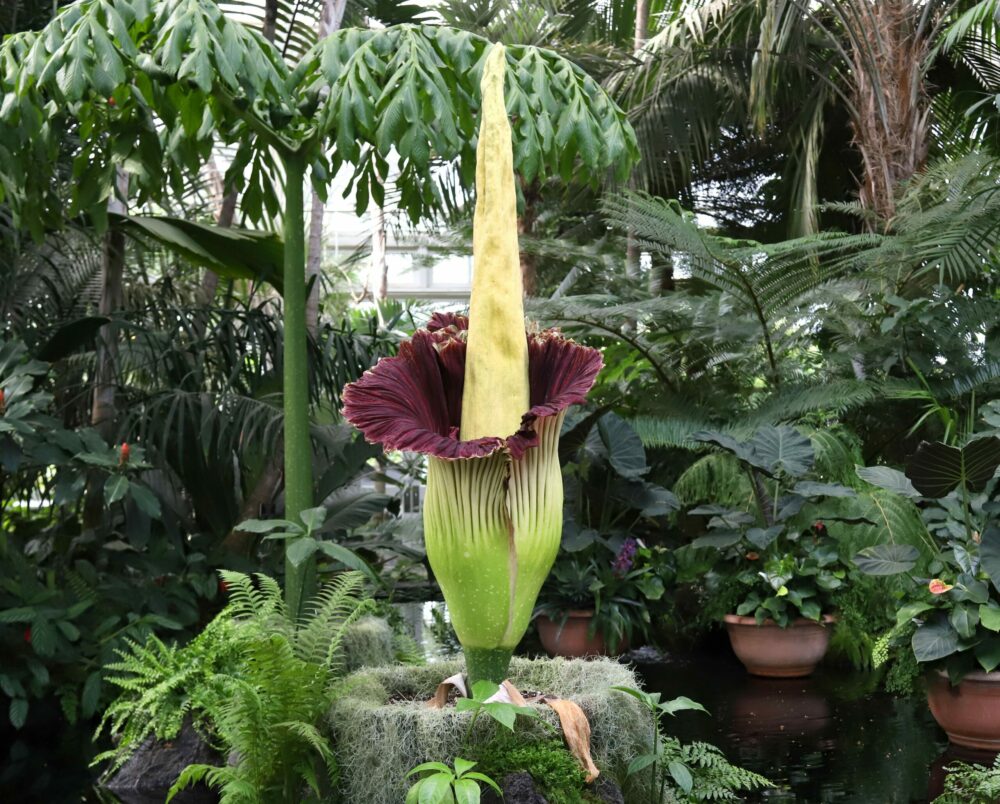
This particular corpse flower, titan arum (or technically amorphophallus titanum, misshapen giant phallus) blooms for a week. The central spadix (remember the calla lily?) has a metabolic way of warming itself, which increases the putrid stench arising from the lining of the spathe, the purple “skirt” surrounding the tall spadix.
But wait! There is a cute relative you can grow at home, amorphophallus bulbifer. A bulb will run about $15. And, true, it will have a slightly rotten smell when it first opens, but nothing like its larger relative. And, so cute! Don’t let the photo fool you. It’s a baby, just six inches tall.
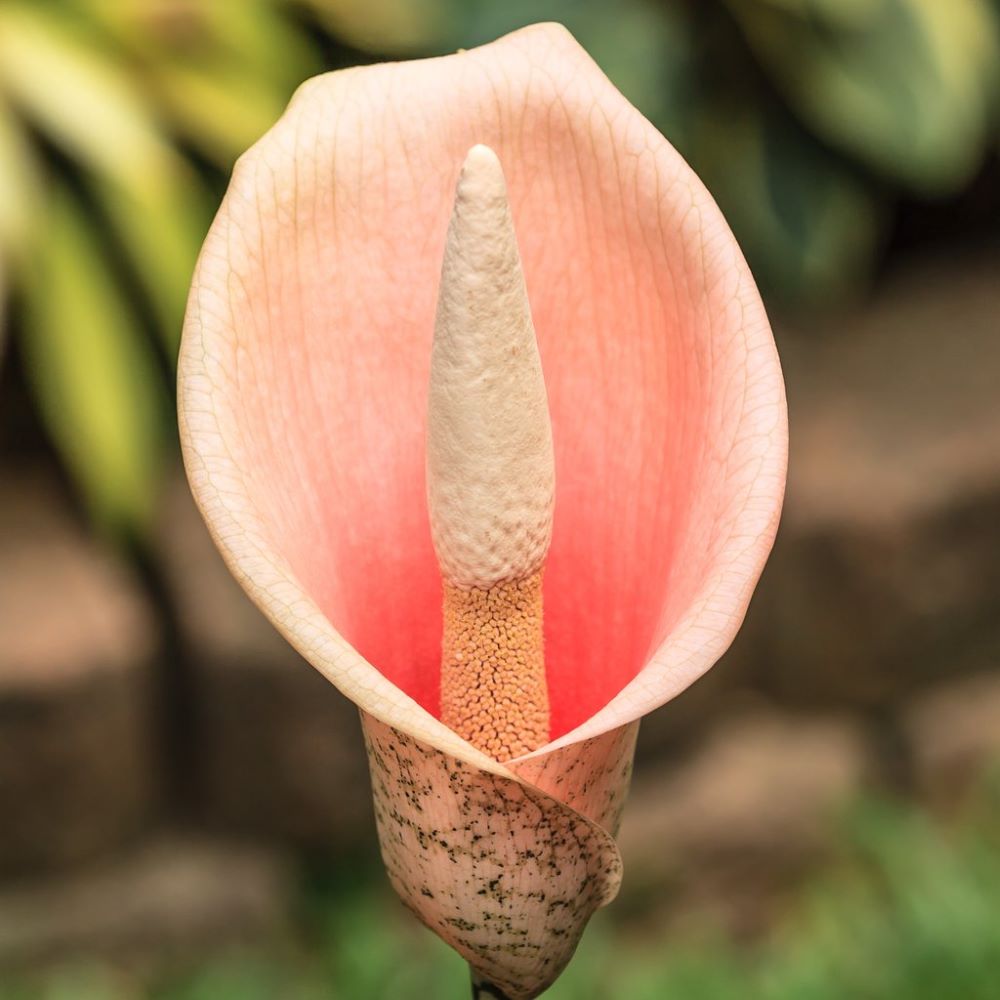
Other rare, expensive flowers: I grew up in Minnesota, and our state flower is the pink Lady Slipper orchid. In my entire life I have never seen a real Lady Slipper orchid, although I have colored many of them in my work books.
There is a reason for that. It is illegal to pick them, dig them up, probably even look sideways at them. They are slowly disappearing from the wild because they require pollination from bees, but don’t offer any nectar or sweet scents, and bees have a hard time getting out the exit in the “slipper,” thus learn to avoid them.
Ditto a yellow Lady Slipper orchid, and most other native orchids in most states.
And then there is the famous ghost orchid chronicled in Susan Orlean’s book “The Orchid Thief,” which grows in Florida. The regulations guarding this tiny orchid are so draconian, you would think it was an actual ghost.
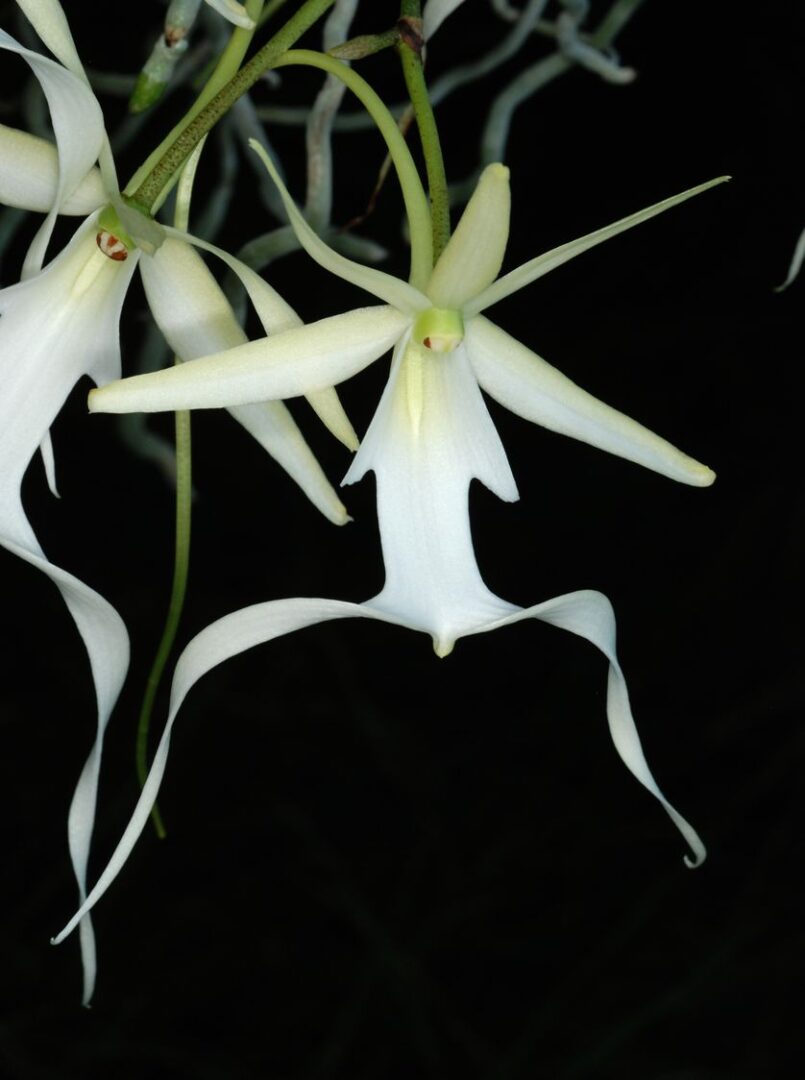
There are other plants that are endangered, extinct or near extinct. The wild chocolate cosmos in Mexico (although there are reports that it has been found in mixed pine and oak forest). It is called the chocolate cosmo because it is not only a deep reddish brown, but it smells like chocolate.
Still, it would be wise to buy commercially grown chocolate cosmo seeds, and not go traipsing around Mexico looking for wild strains.

The parrots beak plant – in particular Lotus berthelotii – growing in the wild in the Canary Islands. While thousands of people grow this stunning ornamental around their California or Florida, Texas or Arizona ranch houses, it is considered nearly extinct in the wild in its original site on the island of Tenerife. The other three varieties – L. eremiticus, L. maculatus and L pyranthus – are less threatened.
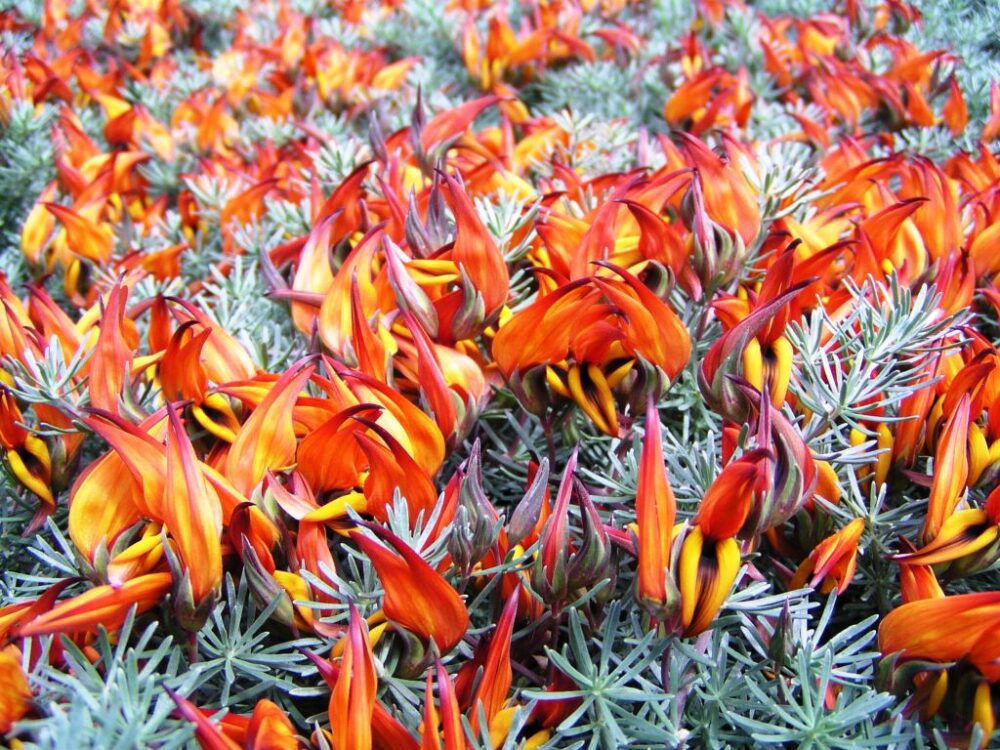
The idea of taking one (or buying one) of any of these plants taken from the wild is beyond consideration.
We here at Flower Power Daily know that saving plants in their original environment, and saving that environment, are essential to our future. Besides, we can always take a killer Instagram and post it. Guess where we are!!
–Linda Lee
